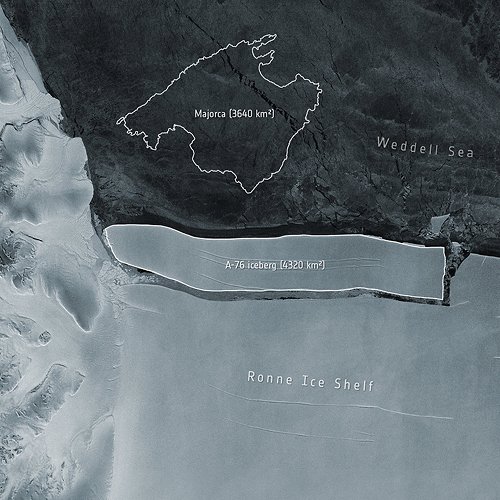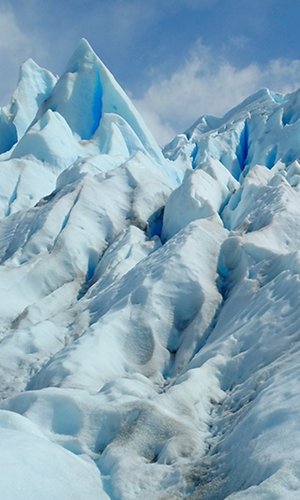A huge iceberg, not much bigger than the Spanish island of Majorca, has broken off from the Ronne Ice Shelf in Western Antarctica and is now floating in the Weddell Sea. The iceberg, known as A-76, is about 170 km long and 25 km wide and has an area of 4320 square kilometres. These numbers make it the world’s largest iceberg, snatching first place from iceberg A-23A (about 3880 sq km), which is also located in the Weddell Sea. In comparison, iceberg A-74, which broke off from the Brunt Ice Shelf earlier this year, was only 1270 square kilometres in size. The images of this huge floating ice island were captured by the Copernicus Sentinel-1 satellite mission and then published on the ESA website.






